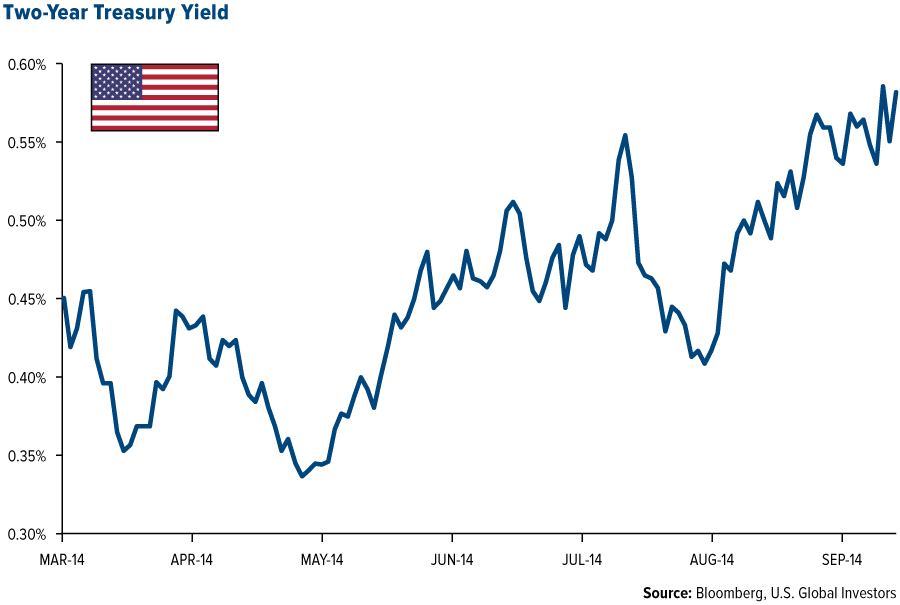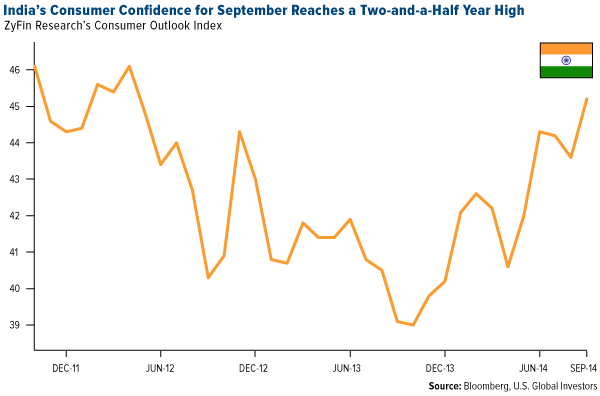China Defies Analysts’ Predictions with an Encouraging PMI
Post on: 16 Март, 2015 No Comment

— Posted Wednesday, 24 September 2014 | | Disqus
By Frank Holmes
The forecast called for overcast skies and instead we got sunshine.
HSBC announced Tuesday that the preliminary purchasing managers’ index (PMI) for China rose to 50.5, a modest improvement from August’s 50.2. Analysts were expecting the index to decline to a neutral 50.0, based on softening factory employment, but this is a case when you’re relieved others were off the mark.
Any number above 50.0 indicates expansion in the manufacturing sector; any number below, contraction. This is the fourth consecutive month that China’s PMI has remained above that magic threshold, a sign that the country’s manufacturing is stabilizing. The last time we saw a winning streak of this sort was between August and December of last year.
Every month, we eagerly anticipate the results of the HSBC China Manufacturing PMI because it partially informs the investment decisions we make in our China Region Fund (USCOX). GDP is helpful, as it measures a country’s economic health, but it tells an incomplete story. Whereas GDP looks only at how things are, the PMI looks forward to how things might be—invaluable information for active money managers like us in the emerging market and resource spaces.
Looking for Another Golden Cross
Although the PMI has remained above 50.0, the three-month moving average failed to cross above the one-month, as it did in May and held through July. We like to see this golden cross occur because it historically indicates more robust commodity demand from the world’s second-largest economy.
China is responsible for about 40 percent of the world’s copper consumption, and when analysts on Monday expressed skepticism of the country’s industrial production, the metal’s price fell to a three-month low of $3.05 per pound. Once everyone’s jitters were abated with the release of the positive flash PMI results, however, the price of copper rose close to $3.10.
We won’t know the final PMI results until September 30, but for now the 50.5 is encouraging.
This news follows the central bank’s announcement that it will inject $80 billion into the country’s five largest banks to jumpstart the economy and help Premier Li Keqiang make good on his reassurance to global CEOs that China will achieve its targeted GDP growth rate of 7.5 percent.

Please consider carefully a fund’s investment objectives, risks, charges and expenses. For this and other important information, obtain a fund prospectus by visiting www.usfunds.com or by calling 1-800-US-FUNDS (1-800-873-8637). Read it carefully before investing. Distributed by U.S. Global Brokerage, Inc.
Foreign and emerging market investing involves special risks such as currency fluctuation and less public disclosure, as well as economic and political risk. By investing in a specific geographic region, a regional fund’s returns and share price may be more volatile than those of a less concentrated portfolio.
The S&P 500 Materials Index is a capitalization-weighted index that tracks the companies in the material sector as a subset of the S&P 500. The S&P 500 Energy Index is a capitalization-weighted index that tracks the companies in the energy sector as a subset of the S&P 500.
The HSBC Flash China Manufacturing PMI is published a week ahead of the final HSBC China PMI every month. It analyzes 85-90 percent of the responses to the Final PMI from purchasing executives in more than 400 small, medium and large manufacturers, both state-owned and private enterprises.
All opinions expressed and data provided are subject to change without notice. Some of these opinions may not be appropriate to every investor.
Past performance does not guarantee future results.
Previous Articles














